Part 7: Mechanics Sperging 2
 About Mechanics Part Two
About Mechanics Part TwoWhat's an RPG without a battle system? Luckily, Grandia's is a bit more fun and involved than the usual "Wait for your turn to come up, pick something from a menu, watch the pretty animation" fare.
Not that you don't wait for your turn to come up, pick your choice from a menu, and then watch the animation, mind you. There's just a little bit more to it than that.
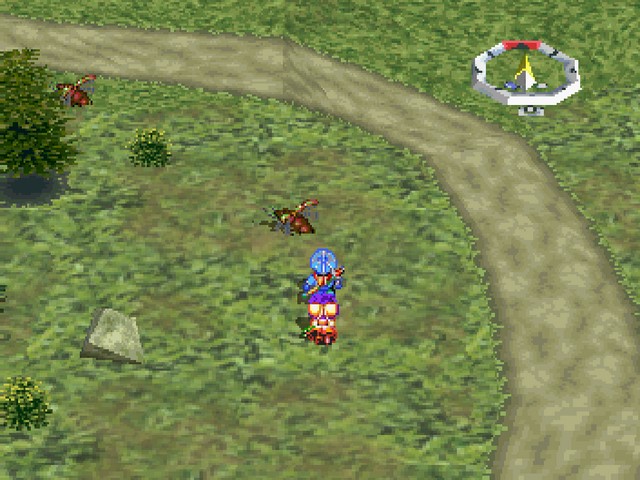
For starters, you actually see the monsters wandering around the map before combat. Yeah, I now, nothing particularly new here, but it was pretty rare for the time.
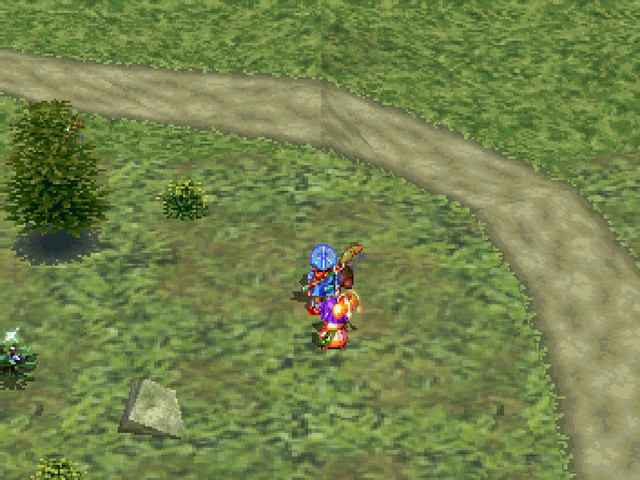
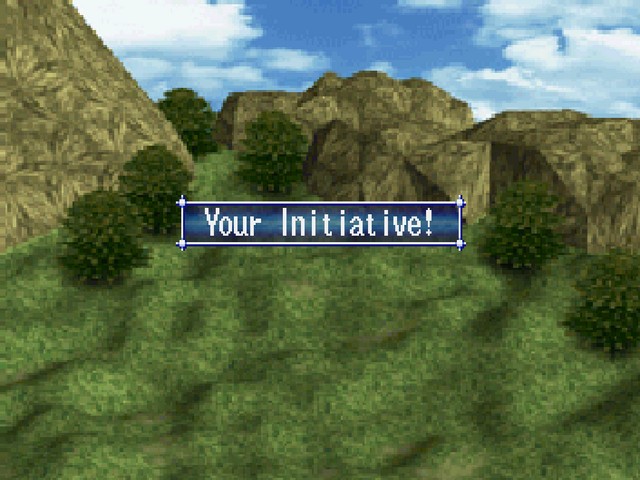

If you run into the enemy before it sees you, you get the drop on it. If it bumps into someone who isn't Justin...
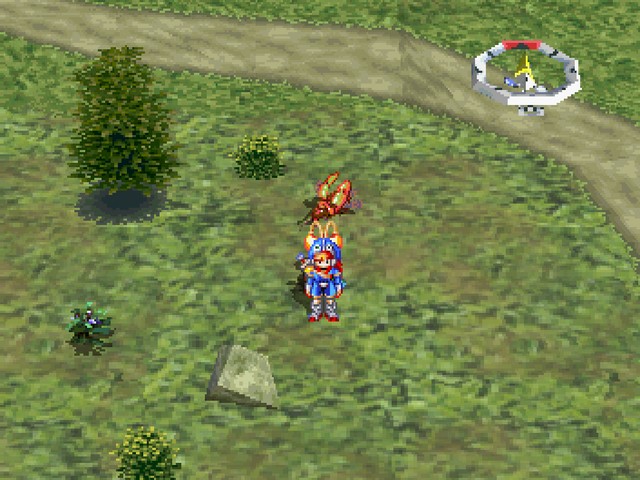
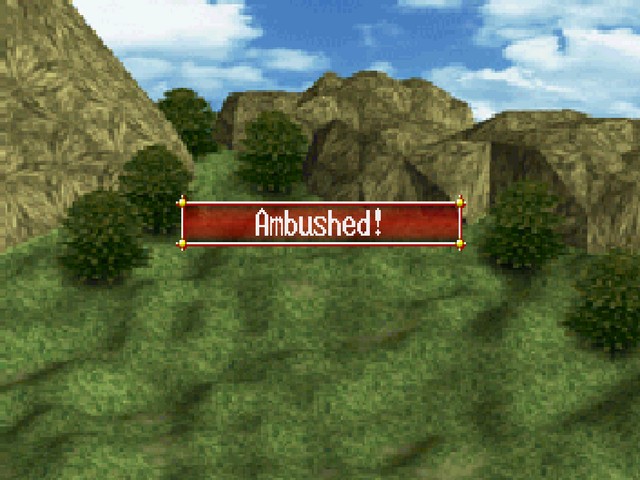

... they get to ambush you.
If they see you, but run into Justin, then neither side gets an advantage over the other.
Again, nothing particularly unique, but still better than "Oops, you were walking down a five-foot hallway and got snuck up on by a forty-foot dragon. Hope you have fire immunity!"
Anyway, let's see what combat actually looks like.
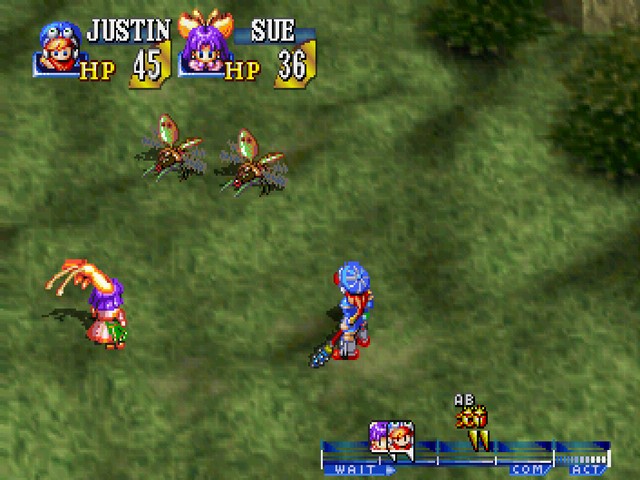
Well, we've got our HP up top, the PCs and enemies there in the middle, and some sort of bar with icons on the bottom right.
This is known as the "Initiative Point Gauge". Each icon represents one of the combatants. Everyone starts off at the far left, and moves towards the "Com" marker at a rate determined by their "ACT" stat (Wit + whatever equipment boosts, if you recall).
If this sounds like an ATB gauge where instead of each character filling a bar, you have one bar that everyone moves along... yeah. That's pretty much it. Once a character hits the "Com" point, you can input their action. Let's take a look at what we can do.
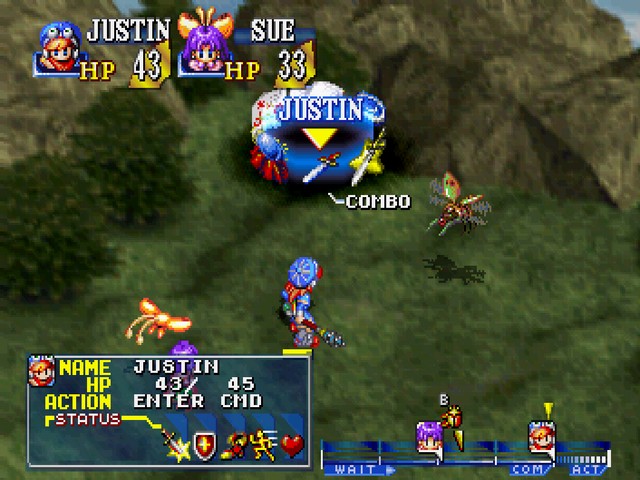
Combo is your basic attack action. The character will run up to the selected enemy and attack twice.
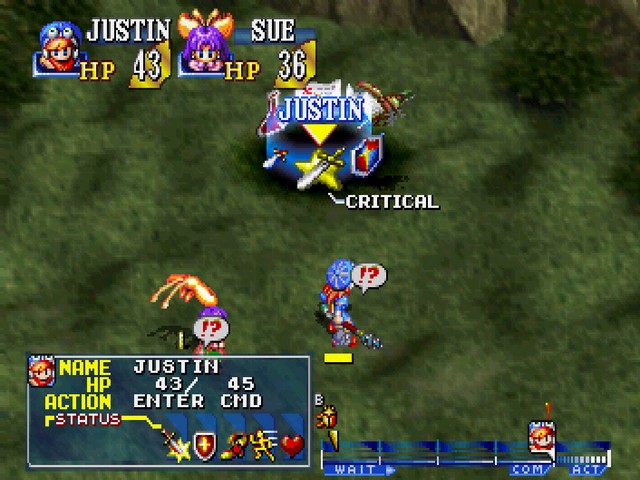
Critical attacks once after a bit of a delay. Typically the one hit does less than the total of the combo would. So what's the deal?
The deal is that a critical will knock the enemy back on the IP gauge, delaying their turn, or even canceling their action if they're far enough along. Situational, but very handy when used properly.
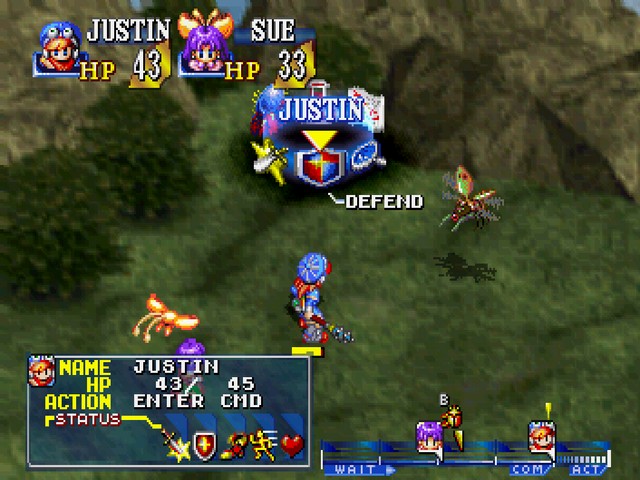
Defend does exactly what it sounds like. Nothing special here, right?
Not quite.
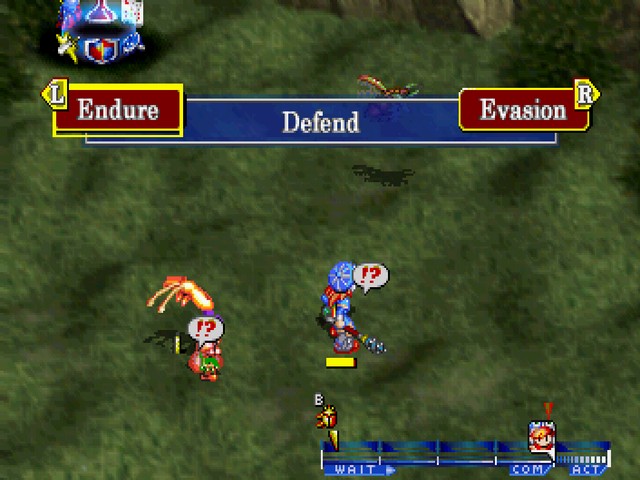
You're given two choices when you defend: Endure or Evade.
Endure has you stand in place and tank the hit, reducing damage and IP knockback.
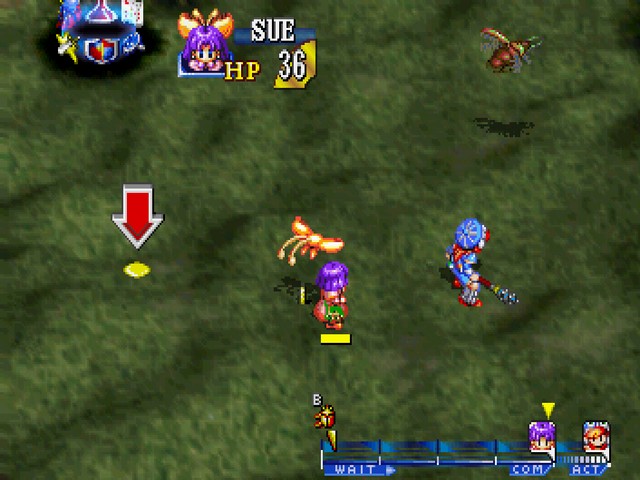
Evasion lets you select a point on the battlefield to run off to, as well as increasing your chances of dodging an attack. Typically, this is used to split the party up or bring them closer together to manage area of effect spells.
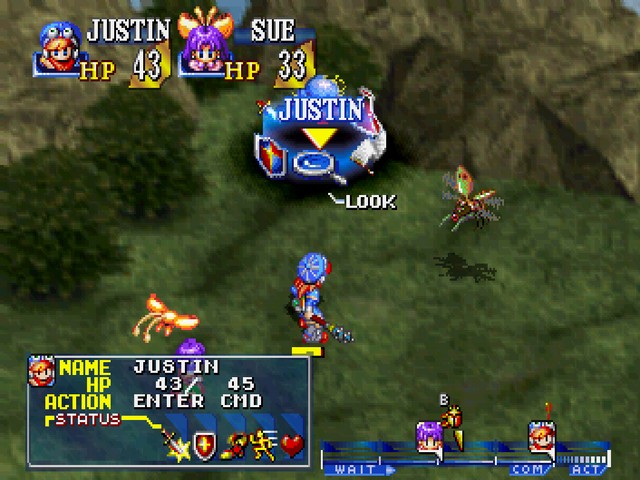
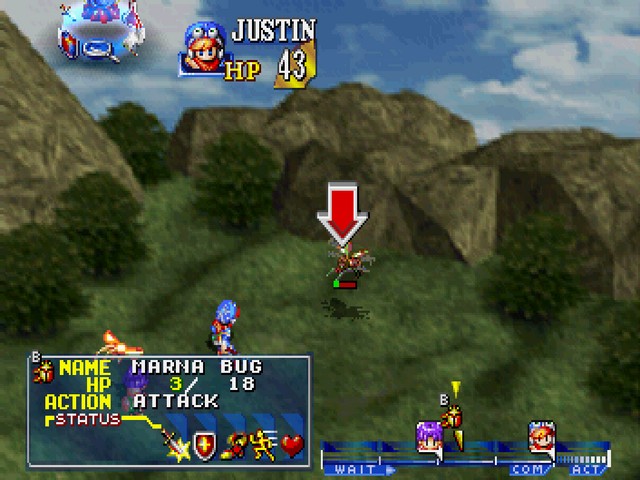
Look lets you see the basic status of an enemy. It'll show their name, current/max HP, their upcoming action (if they've selected it yet), as well as any temporary stat buffs or debuffs they have.
This can be done at any time during command input by holding down the square button.
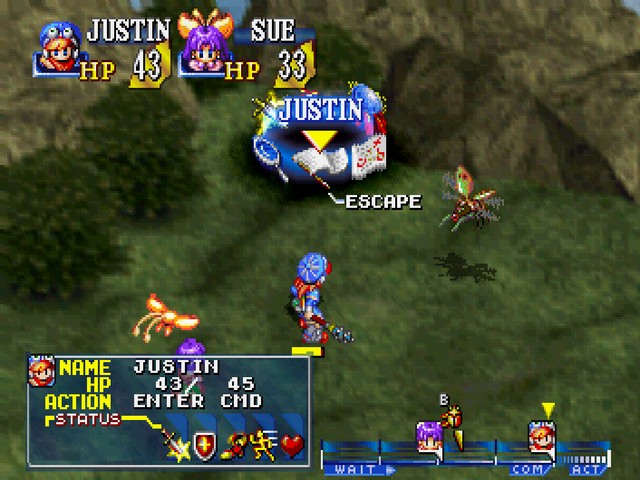
Escape attempts to run away from battle.
... Yeah, that ain't gonna happen. Next!
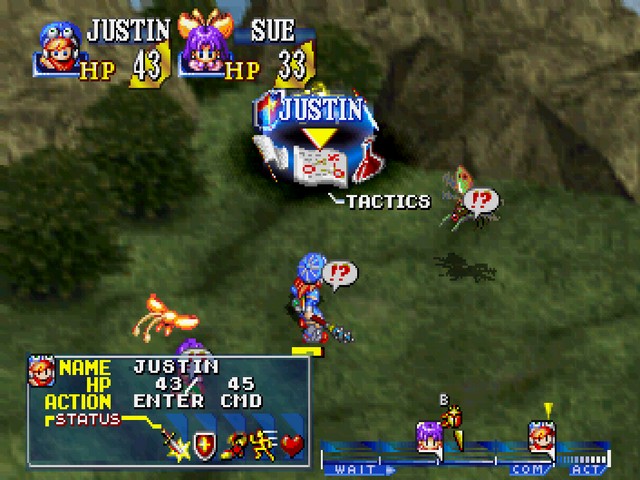
Tactics is far more interesting and useful.
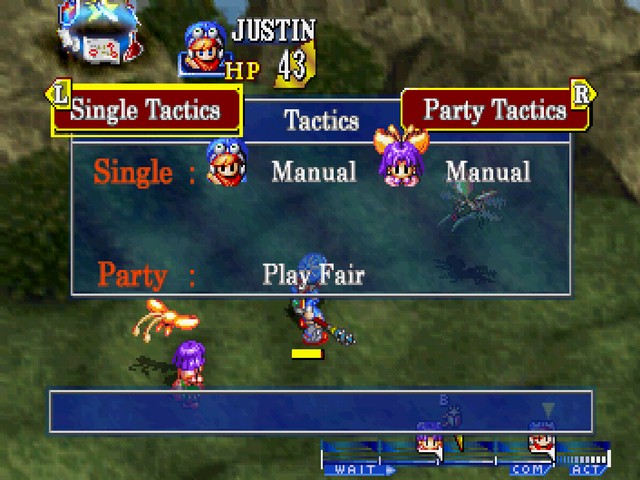
Tactics can be set per character, or applied to the whole party at once.
You can press triangle at any point during battle to set the party in "Play Fair" mode. What does that mean? Well, let's look at the various options.
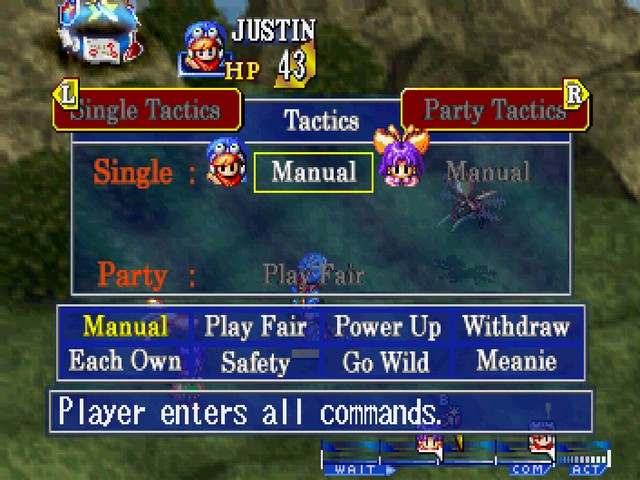
Manual is the default mode. It lets you input all commands. The rest put the character under AI control.
Play Fair causes the character to only use actions that don't consume resourses. Typically, this is just normal attacks, but certain items can be used to cast spells, and those are also considered here. Great if you just want to run though an area filled with weaker enemies.
Power Up causes the character to buff up before fighting. Less useful, as they'll burn MP and SP, and usually buffs aren't difficult to manage on your own, but it's there.
Withdraw will cause the character to only defend. Useful if you are trying to raise one character's weapon or magic levels and don't want the others to interfere.
Setting the whole party to this will cause them to sit there and get beaten on until you cancel it. Or die.
Meanie is the opposite of Power Up. Instead of buffing up allies, Meanie will debuff enemies. Much like Power Up, usually the player can do a better job of it, but it's still there.
Go Wild has the characters focus on destroying the enemies as quickly as possible. It'll readily use the most powerful techs and spells, and even consumable items. Best used near a save point.
Safety prioritizes healing allies over harming enemies. If everyone is at full HP, characters on Safety will begin buffing instead. Can be useful if you don't want to manage characters' HP yourself.
Finally, Each Own lets the characters decide for themselves how to act. A pretty fun AI mode, and usually a balanced one to set the whole party to.
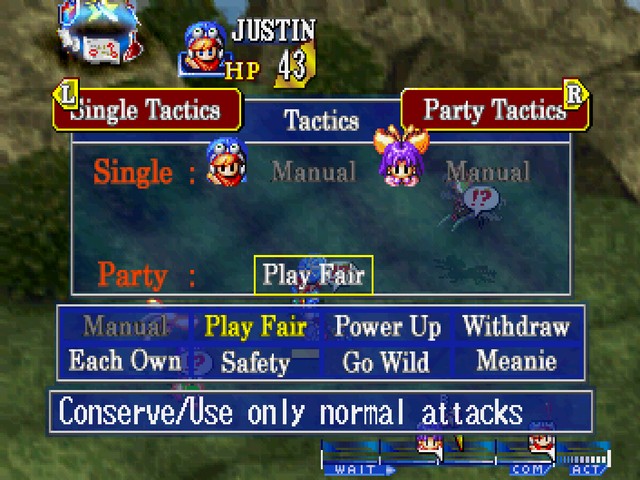
The party tactics options are the same, except that manual is disabled. Since having the whole party set to manual is the same as cancelling the active tactics, this makes sense.
Any active tactics can be canceled, restoring the whole party to manual mode, by pressing circle while outside of the menu.
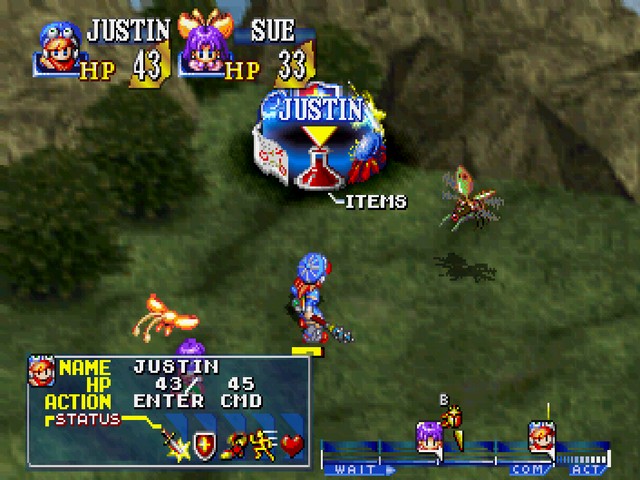
Items lets you use items.

Equipment can't be changed out during battles, but some items can be used to cast a spell.
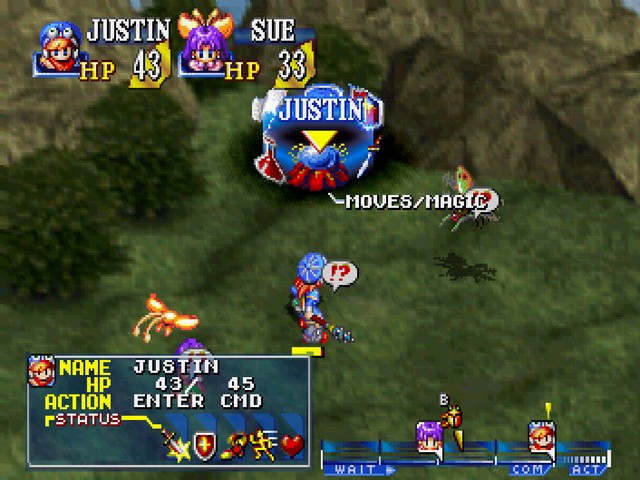
Finally, Moves/Magic allows you to select a special move or spell.

This screen shows your current/max SP, your skills, and their costs. Each skill also has a number of stars below it; this represents the charging time, with more stars causing the skill to be executed more quickly. Stars are gained by increasing the levels of the weapons or elements used, which are shown in the box on the lower-left. All skills will use a weapon, with some also having a magical element or two.
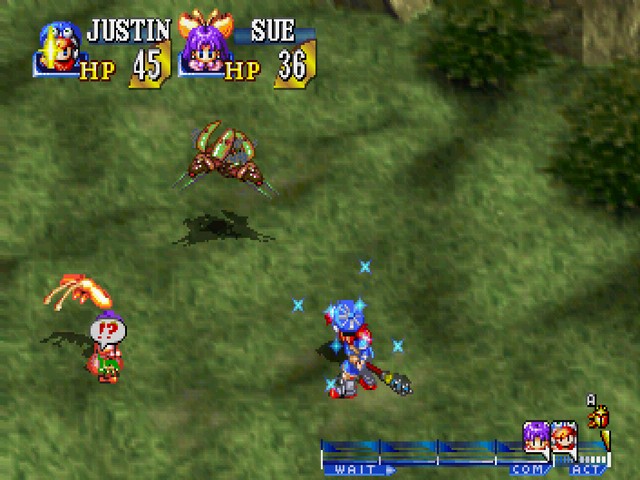
When you choose a skill, the character's icon moves towards the "Act" marker on the IP gauge, at a speed determined both by the skill or spell you've selected, as well as how many stars it has.
In addition, a character or enemy who is planning on using a skill or spell will give off sparkles, letting you know when enemies are planning something nasty.
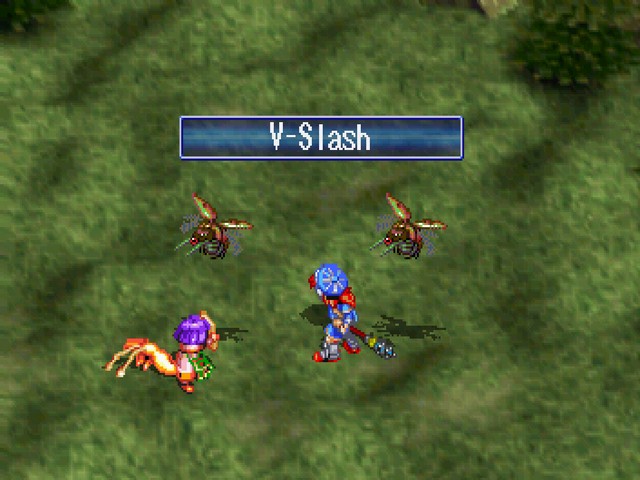
When a skill goes off, unlike with a normal attack, time freezes during the animation. Naturaly, this can be abused with good enough timing.
Most techs also have an IP knockback effect, like criticals.
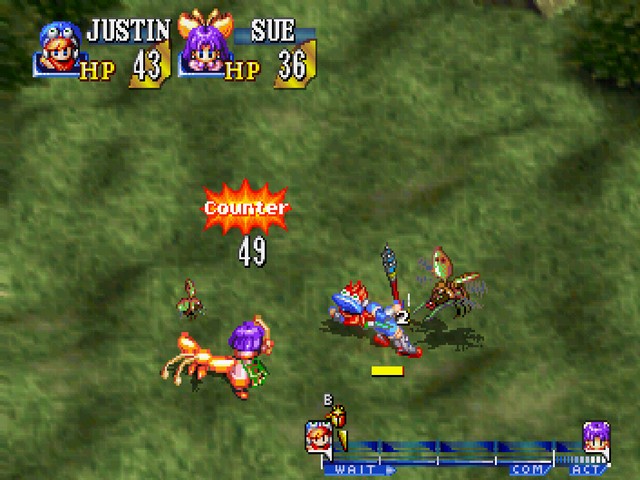
Speaking of time not being frozen during normal attacks, if you are hit during one, you will take extra damage and the little counter icon will appear. The extra damage is always a decent boost, and it even stops the victim from moving on the IP gauge for a little while longer than normal.
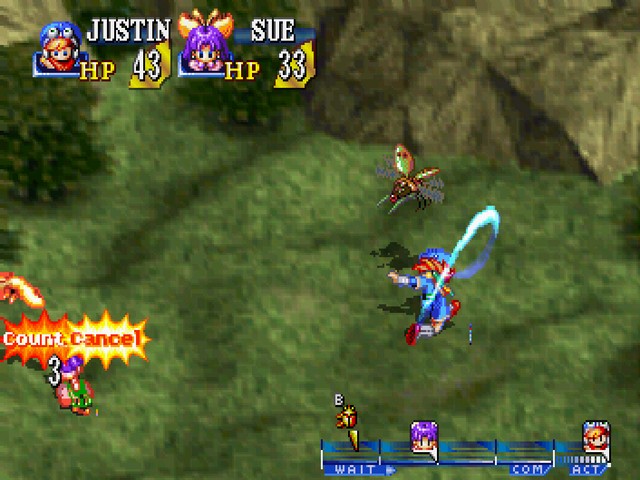
You may be tempted to aim for a counter with a tech. After all, if you're going to get a damage bonus, why not apply it to something that deals a bunch of damage and can't be counered?
The problem there is that they can be canceled. If you are hit by a critical, tech, or certain spell during the charge-up period, you can have the skill canceled, and be pushed way back on the IP gauge.
Naturally, you can do this to enemies as well.
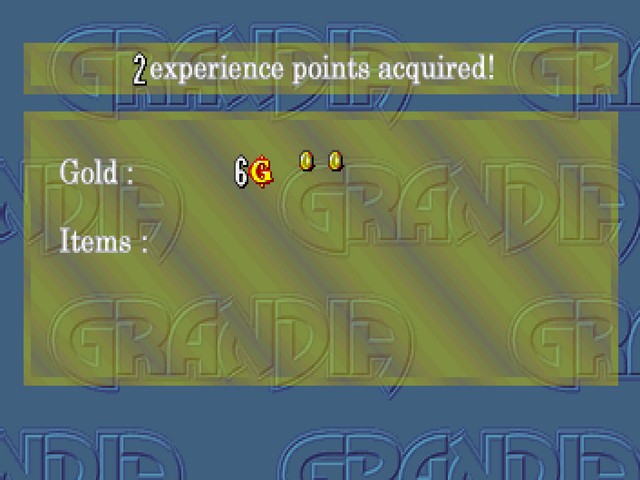


Once all the enemies are defeated (or you sucessfully escape), you are presented with the battle results screen, listing the exp, gold, and any items you may have gotten from the fight.
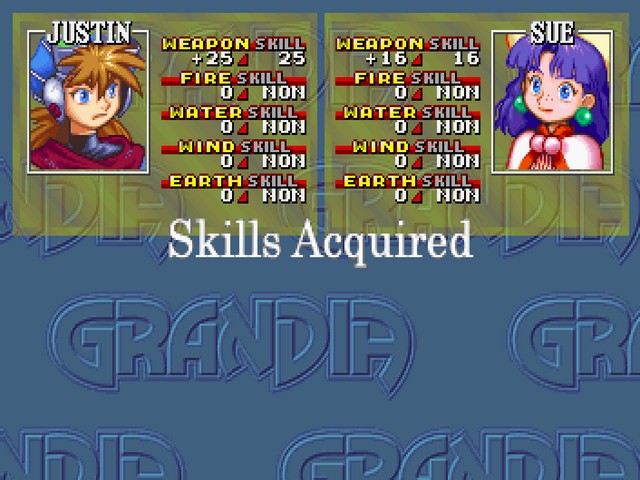
After which, you are given a rundown of how much weapon/element XP you earned in this battle. The "NON" shown under the elements doesn't mean that we didn't gain any XP for them, but rather that we haven't learned any magic for that element yet.
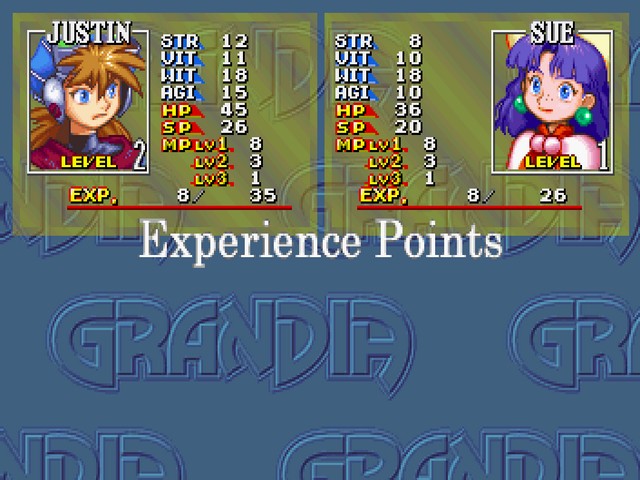
And finally, we are awarded with our exp. If you gain enough to level up, it'll also show you your new stats.